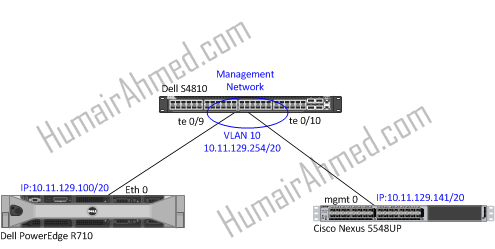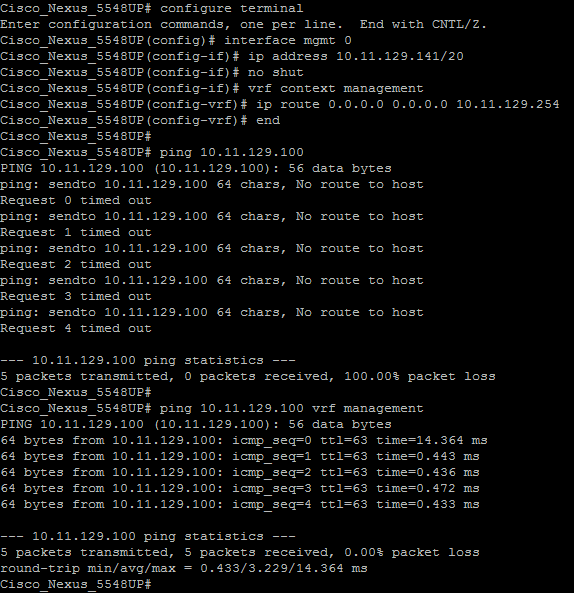This is a relatively simple blog on configuring the Cisco Nexus 5548UP management interface. When Cisco moved away from IOS to NX-OS for the operating system on their new Nexus datacenter switches, some of the commands and syntax for even the simplest tasks have changed. For easy reference for a common task such as setting the management interface I decided to write this quick blog. The network diagram is below. I am using a Dell S4810 [FTOS 9.1] for my management switch to which both the Dell PowerEdge R710 server and Cisco Nexus 5548UP [NX-OS 5.2(1)N1(1b)] connect. I also use a 1000Base-T SFP transceiver to convert the Dell S4810 fiber port to copper, so I can connect it to the management port of the Cisco Nexus.
NX-OS uses what is known as Virtual Routing and Forwarding (VRF). VRF provides an added layer of network virtualization on top of virtual device contexts (VDCs). VRF provides distinct unicast and multicast address space and associated routing protocols that make independent forwarding decisions. All unicast and multicast protocols support VRF functionality. Two VRF instances are configured by default: the management port on the supervisor module is assigned to the management VRF, and all I/O module ports are assigned to the default VRF.
With that said, below is the complete configuration of the management interface on the Cisco Nexus 5548UP. Note that before setting the default route, I change the VRF context to ‘management’. Additionally, note when testing via pinging the Dell PowerEdge server IP of 10.11.129.100 from the Cisco Nexus CLI, I need to append ‘vrf management’ to the end of the command.





 Twitter
Twitter LinkedIn
LinkedIn Youtube
Youtube RSS
RSS
3 Responses to Cisco Nexus 5548UP – Configuring the Management Interface